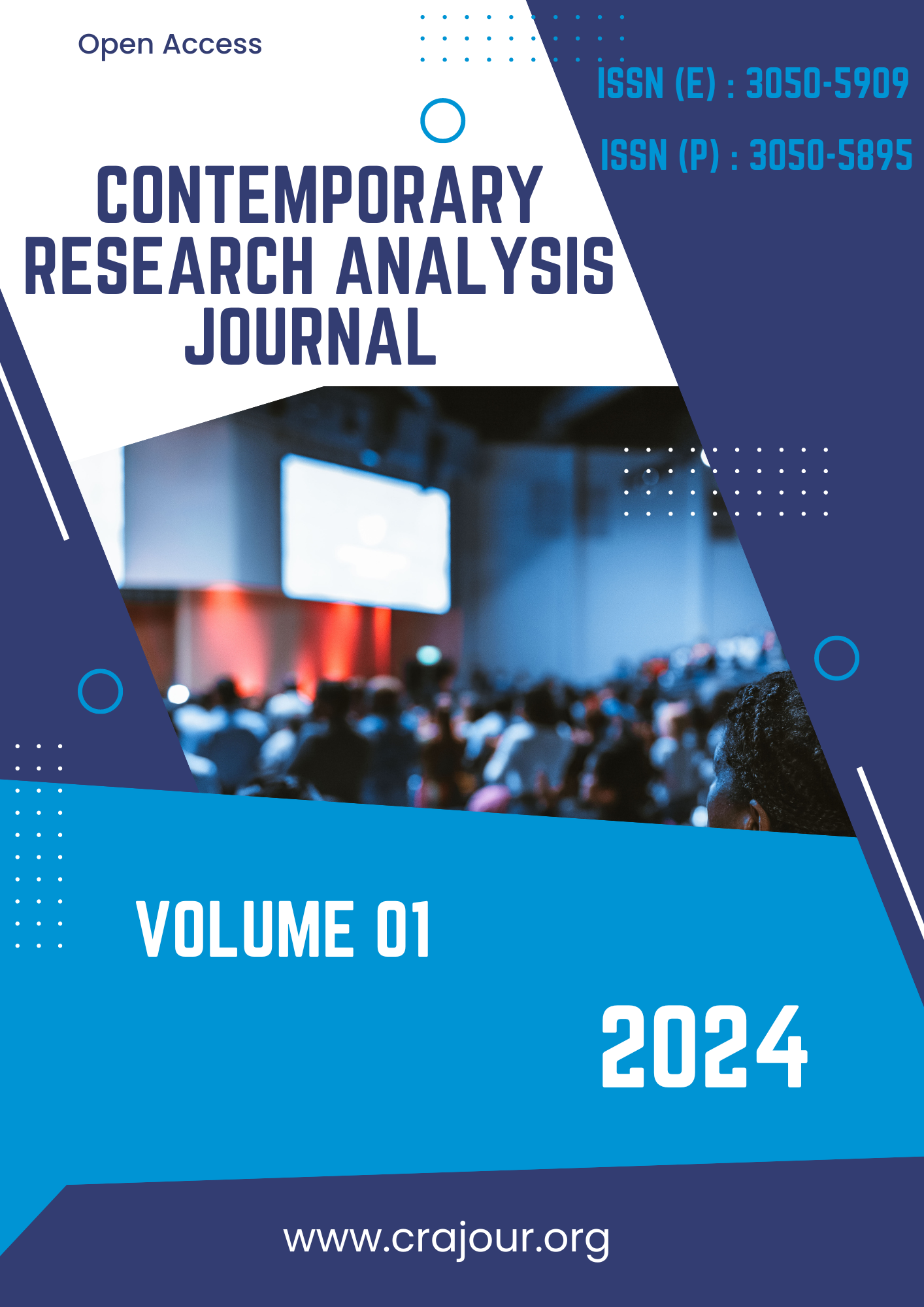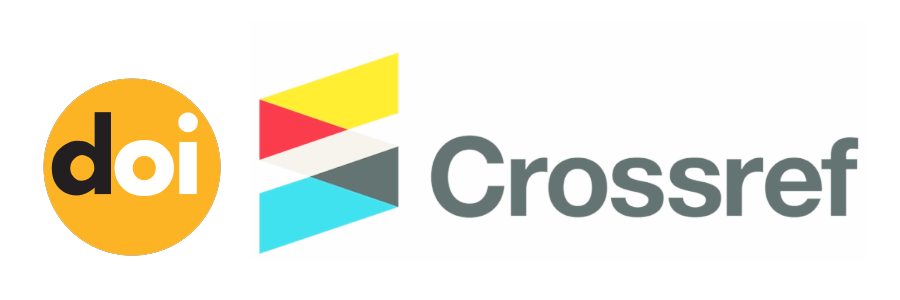Cultural Perception Effects on Customer Experience and Customer Patronage of Branded Alcoholic Bitters Beverage
DOI:
https://doi.org/10.55677/CRAJ/01-2024-Vol01I5Keywords:
Culture, customer, perception, customer experience, patronageAbstract
Under the impact of globalization, consumers from different culture might hold different information processing tendency towards certain concepts and different perception since cultural orientation affects their perception and expectation. Firms are increasingly using the framework of customer experience to define their offering since differentiating one’s product or service is to create memorable customer experience. The purpose of the study is to assess cultural perception in relation to customers’ experience and customer patronage of branded alcoholic bitters beverage. All the consumers of branded alcoholic bitters beverage in Lagos State and who visited the designated place within the four (4) weeks period made up the study population. 1153 usable research instrument were retrieved based on the researchers’ judgment through convenience sampling technique and data collected were analyzed using descriptive and inferential statistical tools. T-test of multiple regression analysis were used to analyze factors in the independent variables and their effects on the dependent variable. The study revealed that cultural perception, customer experience and customer patronage have a very strong and positive relationship therefore, concluded that there is strong positive relationship between cultural perception, customer experience and customer patronage based on the consumers’ cultural perception as they try to experience the product. It is therefore, recommended that Organizations, Marketers, and other stakeholders in relation to marketing of alcoholic bitters beverage understands how to play along cultural perception by building and creating a strong attributes of perception of the product in mind of consumers. Also, conduct customer experience survey from time to time in order to monitor and obtain information on how to sustain and improve the consumers’ feels about their product by focusing on those factor that will help build a long-lasting and mutually profitable relationship with its’ customers.
References
Adiele, K. C., & Nweke, L. I. (2015). Effect of atmospherics on bank patronage behavior: Lessons from Nigeria retail banks. Review of communicational and Media Studies, 1(2), 153-163.
Akekue-Alex, N., & Kalu, S. E. (2016). Positioning strategies and customer patronage of fast-food firms in Port-Harcourt, Nigeria. European Journal of Business and Management, 8(36), 63-74.
Alas, R., Kaarelson, T., Niglas, K. (2008). Human resource management in cultural context: Empirical Study of 11 counties. EBS Review, 24(1), 1-20.
Alsharhan, D. A. (2013). Retail lighting and customer product perception: A cross-cultural study, Published M.sc Thesis, Arizona State University, USA.
Balakrishnan, B. K. P. D. (2017). The effectiveness of an enriched service-scape framework on value-in-use and behavioral responses: The co-working space context, Unpublished Ph.D Thesis, School of Economics, Finance and Marketing, RMIT University.
Basera, C. H., Mutsikiwa, M., & Dhliwayo, K. (2013). A comparative study on the impact of ambient factor on patronage: A case of three fast-food retail brand in Masvingo, Zimbabwe. Journal of arts, Science and Commerce, 6(1), 24-32.
Bjorkman, H., Egardsson, P., & Tengstrom, M. (2015). Retail experience marketing: A study on customer perceptions of successful in-store experience marketing within retailing. Thesis, Jonkoping International Business school, Jonkoping University, Sweden
Brakus, J., J., Schmitt, B., H., & Zarantonello, L. (2009). Brand experience: What is it? How is it measured? Does it affect loyalty? Journal of Marketing, 73, 52-68.
Canny, I. U. (2014). Measuring the mediating role of dining experience attributes on customer Satisfaction and its impact on behavioral intentions of casual dining restaurant in Jarkata. International Journal of Innovation, Management and Technology, 3(1), 25-29
Dey, S., & Sethi, D. (2017). Pareto analysis of antecedents for customer experience, through literature Review. International Journal of Engineering and Management Research, 7(4), 75-83.
Dziewanowska, K. (2015). Dimensions of real and virtual consumer experience, University of Warsaw, Faculty of Management. Working Paper Series 4
DiPietro, R. B., & Campbell, J. (2014). The influence of service-scape and food attributes on pleasure and revisit intention in an upscale-casual dining. Hospitality Review, 31(4), 1-35.
Fernandes, T., & Cruz, M. (2016). Dimensions and outcome of experience quality in tourism: The The case of port wine cellars. Journal of Retailing and consumer service, 31, 371-379.
Fishbein, M. (1963). An investigation of the relationship between belief about an object and the attitudes towards that object. Human Relations, 16, 233-240.
Garg, R., Rahman, Z., & Qureshi, M. N. (2014). Measuring customer experience in banks; Scale development and validation. Journal of marketing in Management, 9(1), 87-117.
Garip, E., & Unlu, A. (2012). Visual evaluation of the store environments: A comparative study on international differences. ITU A/Z, 9(2), 107-120.
Grewal, D. W., Monroe, T. & Krishnan, D. B. (2009). Corporate social performance as a competitive advantage in attracting a quality workforce. Business and Society, 39(3), 254-280.
Guilbault, M. D., & Omanwa, V. (1014). Culture and the impact on customer service: Considerations for off-shoring to India. Atlantic Marketing Journal, 3(1), 64-73.
Haery, F. A., Ghorbani, H., & Farahmand, A. A. (2014). An AHP approach for ranking critical success factors of customer experience in Iranian banks from managers’ viewpoint. International Journal of Marketing Studies, 6(1), 168-176.
Hofstede, G. (2001). Culture’s consequences: comparing values, behaviors institutions and organiztions Across nations. Newbury Park, CA: sage.
Holbrook, M., & Hirschman, E. (1982). The experiential aspect of consumption: Consumer fantasies, feelings and fun. Journal of Consumer Research, 9,132-140.
Jere, M. G., Aderele, B. A., & Jere, A. (2014). Exploring factors that influence store patronage amongst Low-income consumers in Cape Town. Mediterranean Journal of Social Sciences, 5(20), 150-160.
Keng, C. J., Huang, T. L., Zheng, L. J., & Hsu, N. K. (2007). Meddling service encounters and customer experimental value in retailing, An empirical investigation of shopping mall customers in Taiwan. International Journal of Service Industry Management, 18 (4), 349-367.
Kenttaman, K. (2014). Identifying and measuring the dimensions of customer experience: A study in the Finish ice cream bar chain. M.Sc Thesis, OULU Business School, University of Finland.
Kim, S., Cha, J., Knutson, B. J., & Beck, J. A. (2011). Development and testing of the consumer experience index ( CEI). Managing service quality, 21(2), 112-132.
Koci, D., & Sidark, A. (2014). How convenience, employees and service-scape influenced by culture differences affect customer experience in banks. Thesis, Department of Business administration, Kristianstad University, Sweden.
Lin, Y. (2004). Evaluating a service-scape: The effect of cognition and emotion. International Journal of Hospitality Management, 23, 116-178.
Liu, B. S. C., Furrer, O., & Sudharshan, D. (2001). The relationship between culture and behavioral intentions towards services. Journal of service Research, 4(2), 118-129.
Maitlo, M., Z., Jugwani, N., & Gilal, R. G. (2017). The model of customer experience and purchase Intentions in online environment. Sukkur IBA Journal of Management and Business, 4(1), 1-17.
Maklan, S., & Klaus, P. (2011). Ustomer experience: Are we measuring the right thing? International Journal of Marketing Research, 53(6), 771-792.
Malesevic, V., Kojic, N., & Savic, (2014). Marketing segmentation and targeting base on artificial intelligence, International Journal of Advance Research in Electrical Electronic and instrumental Engineering 3(12), 1346-1477.
Mclean, G., & Wilson, A. (2015). Evolving the online customer experience: Is there a role for online customer support? 25th Annual RESER Conference “Innovative Service in the 21st Century” Proceedings. Available at https://strathprints. Strath.ae.uk.57553/
Mehrabian, A., & Russell, J. A. (1974). An approach to environmental psychology: Cambridge. N.A: MIT press.
Ogbechi, A. D. (2019). Effect of branding on customers’ perecptionof bitters beverage in Lagos State, Nigeria, Thesis submitted to the Collage of Postgraduate studies, Ekiti State University for the award of Doctor of Philosophy in Business administration
Petermans, A., Van-Cleempoel, K., Nuyts, E., & Vanrie, J. (2009). Measuring emotions in customer experience in retail store environment: Testing the applicability of three emotion measuring instruments. Available at http://www.researchgate/publcation/263888084
Petkova, D. (2006). Cultural diversity in people’s attitudes and perceptions, Fondazione Eni Enrico Mattei, Social Science Research Network Electronic Paper Collection.
Pine, B. J., & Gilmore, J. H. (1999). The experience economy, Boston, MA: Harvard Business School Press.
Ponnan, H., Sahoo, D., & Balaji, M. (2011). Satisfaction based segmentation: Applicationof Kano model in Indianfae-food industry. Journal of Targeting Measurment and Analysis for Marketing, 19(3/4), 195-305.
Ramseook-Munhurrun, P. (2012). Perceived service quality in restaurant services: Evidence from Mauritius. International Journal of management and Marketing Research, 5(3), 1-13.
Seo, Y. (2012). Cultural impact on customer satisfaction and service quality evaluation in hotels. UNLV, Dissertation, Professional Papers and Capstones, 1370.
Trepstra, V., Sarathy, R., & Russow, L. (2006). Global environment of business, Garfield Heights, H. O: North Coast Publishers.
Thitthongkam, T. (2013). Role of language and culture towards customer satisfaction in competitiveness of the Thai Tourism industry. International Journal of Economics, Finance and Management, 2(1), 102-113.
Voon, B. H. (2011). Service environment: Findings from the youth customers. Journal of Asia Behavioral Studies, 1(2), 45-56.
Walter, U., Edvardsson, B., & Ostrom, A. (2010). Drivers of customers’ service experiences: A study of restaurant industry. Managing service Quality, 20(3), 236-258.
Downloads
Published
Issue
Section
License
Copyright (c) 2024 Contemporary Research Analysis Journal

This work is licensed under a Creative Commons Attribution 4.0 International License.



